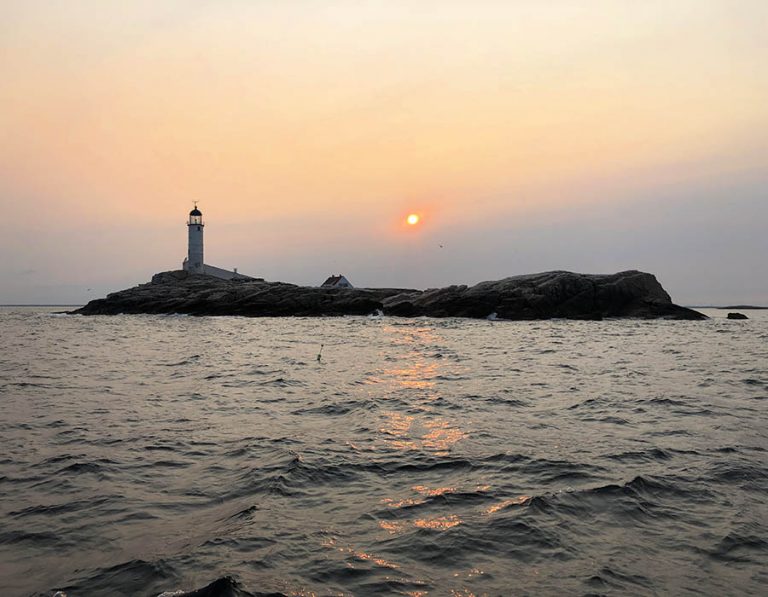
White Island Light at the Isles of Shoals
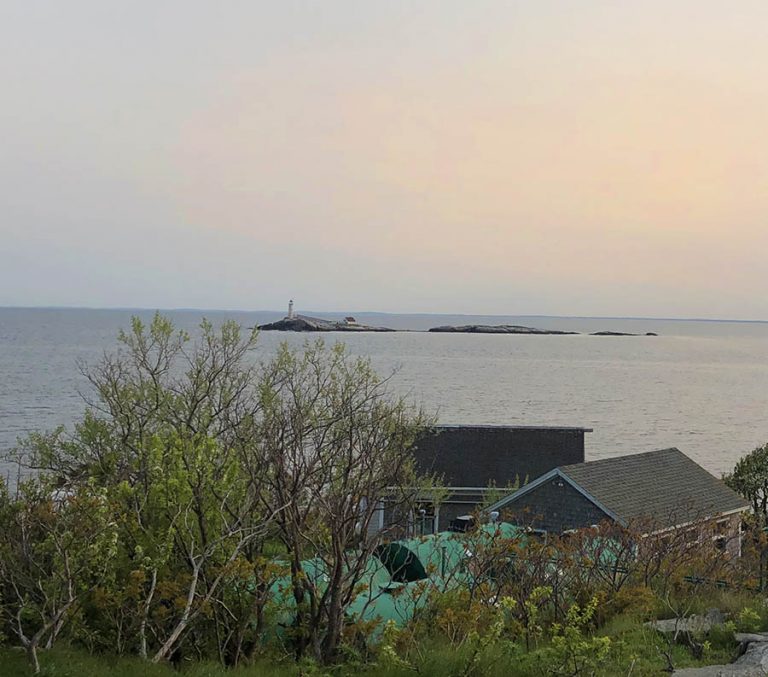
White Island as seen from Star Island

White Island Lighthouse
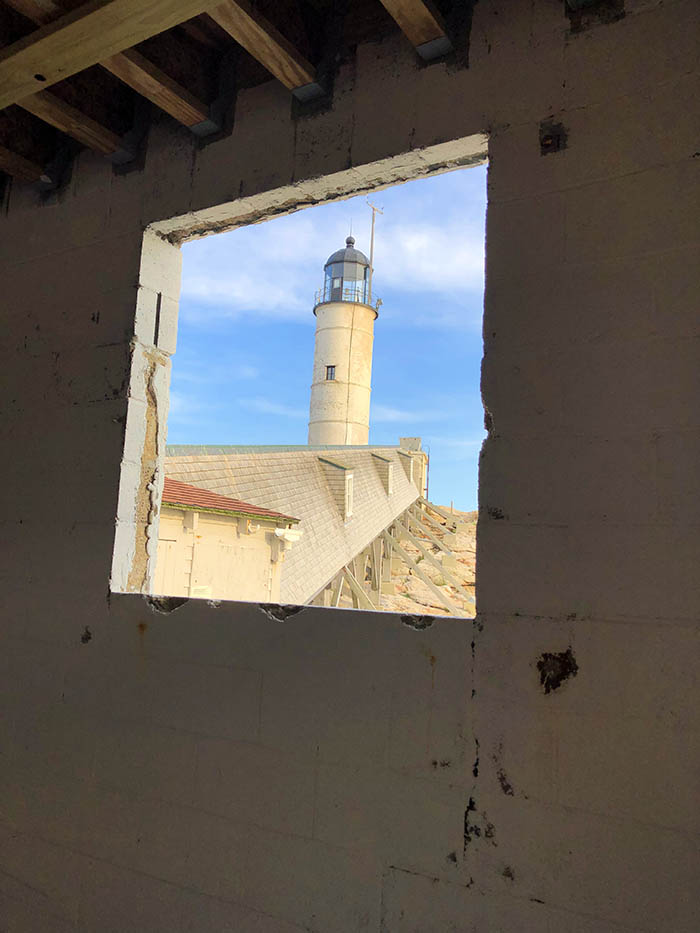
White Island Light at the Isles of Shoals (view from the generator room window)

White Island Lighthouse

White Island Lighthouse
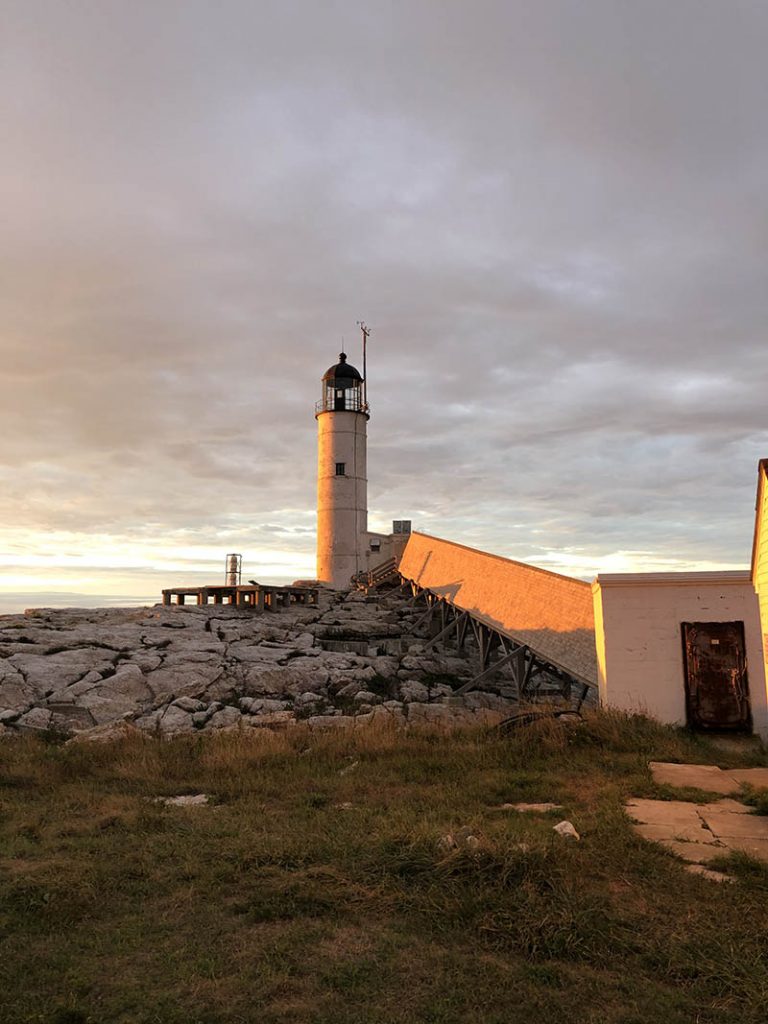
Sunrise at the Isles of Shoals Light

Isles of Shoals Lighthouse just after sunset
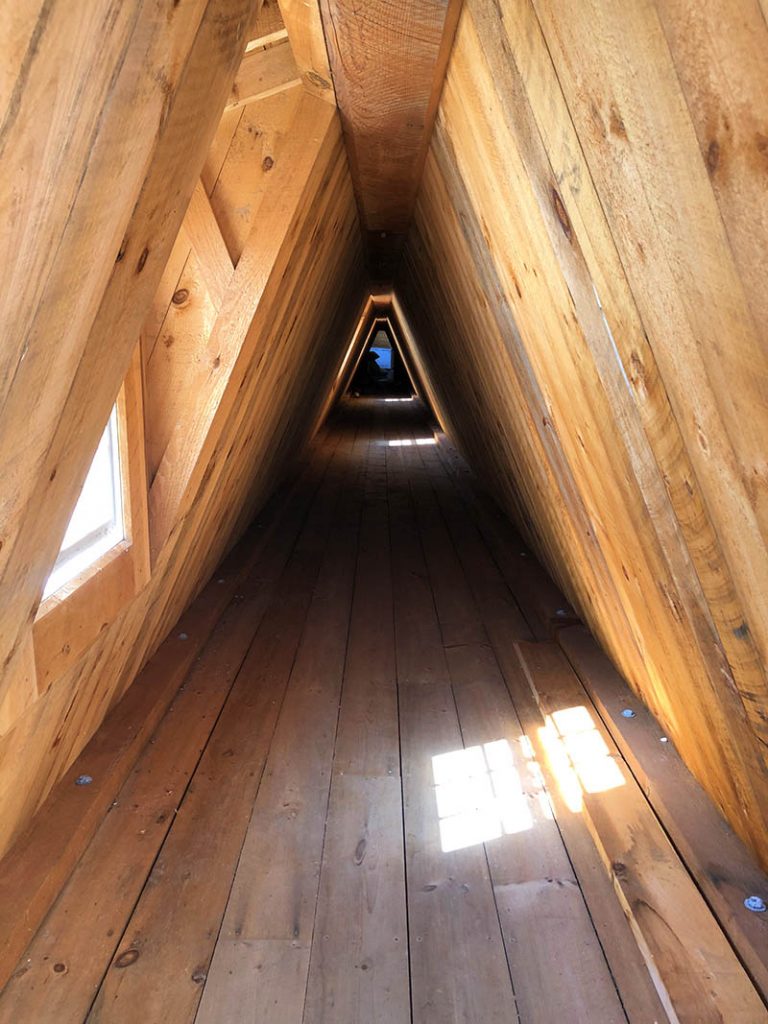
Covered tunnel from the generator room to the keepers cottage

Inside White Island Lighthouse

White Island Lighthouse

White Island Lighthouse

White Island Lighthouse

Sunset from the top of White Island Light

Sunset View From the Top of White Island Lighthouse Looking Towards New Hampshire's Mainland

Inside White Island Lighthouse Looking Up at Top

Seal on White Island Isles of shoals

Keepers Cottage

View of Lighthouse From Upstairs Bedroom in Keepers Cottage. The Old Roof on the Generator Room Shown was replaced in 2019

The new roof on the generator room.
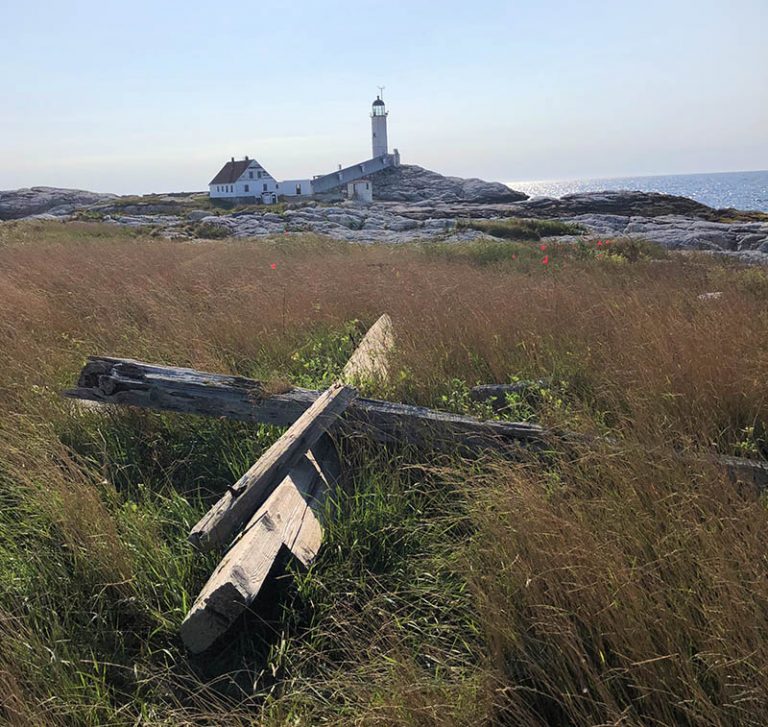
Parts of the old covered tunnel on Seavey Island. The wave that caused so much destruction was very powerful. These beams are massive!
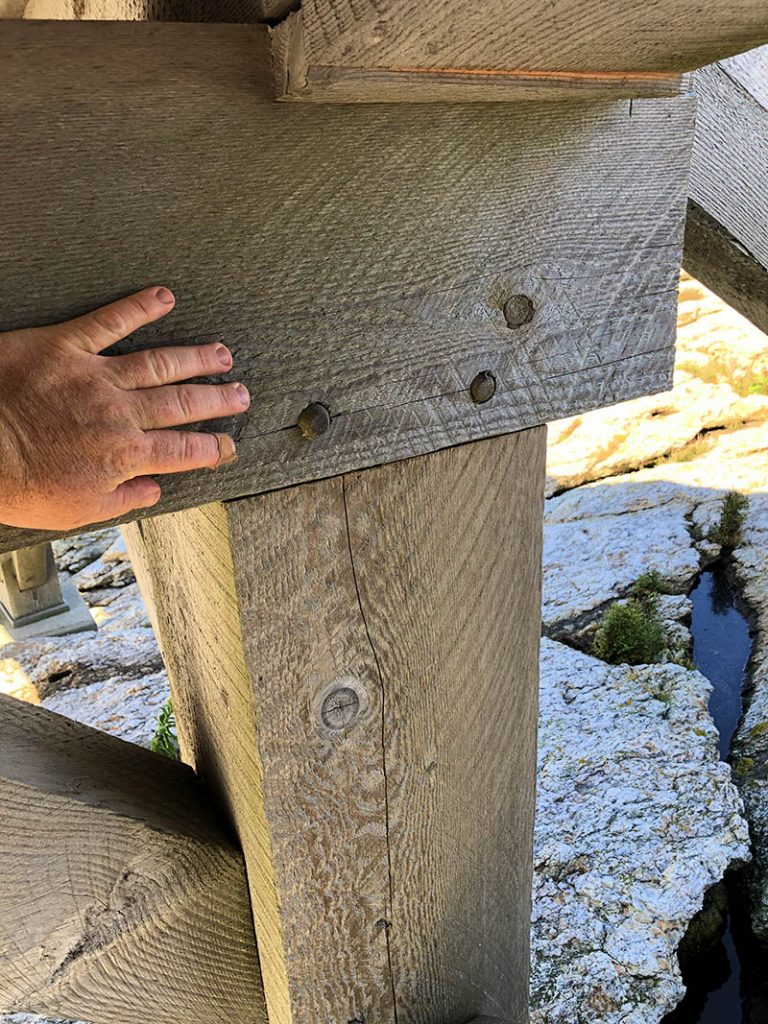
The beams that support the new covered tunnel are massive!
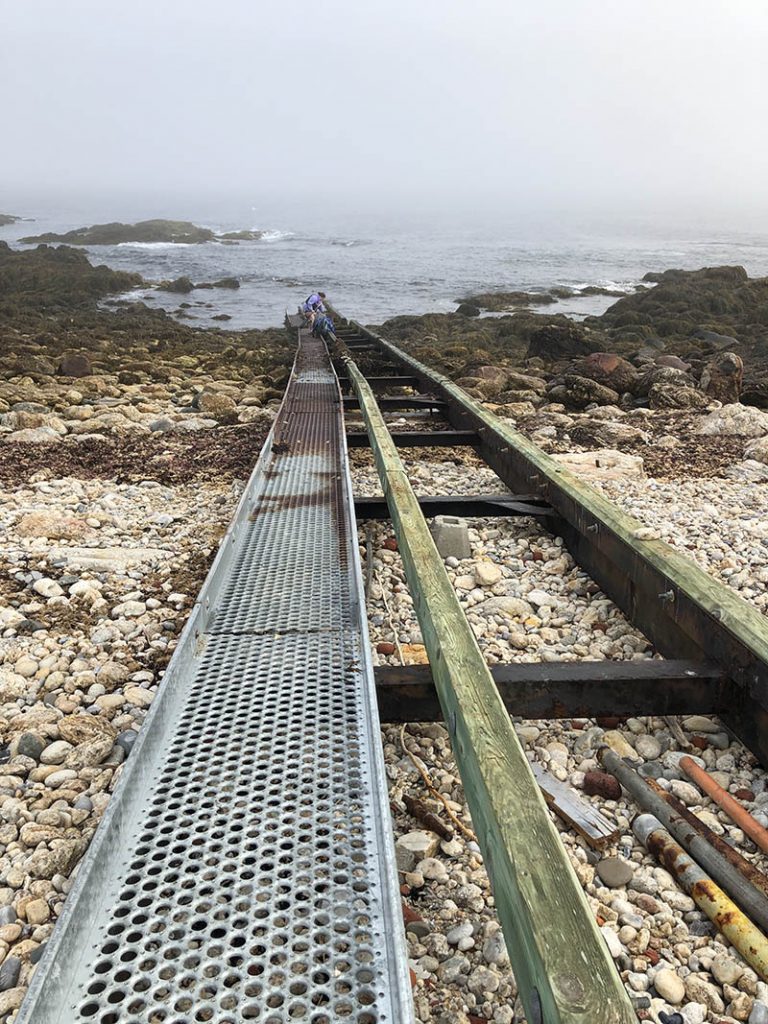
The slipway and ramp (see description for information about getting onto White Island)
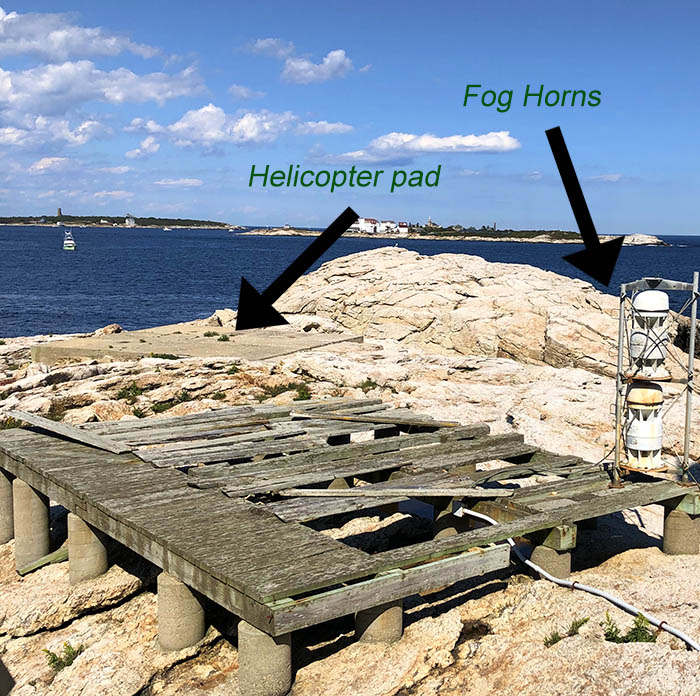
Helicopter pad and fog horns
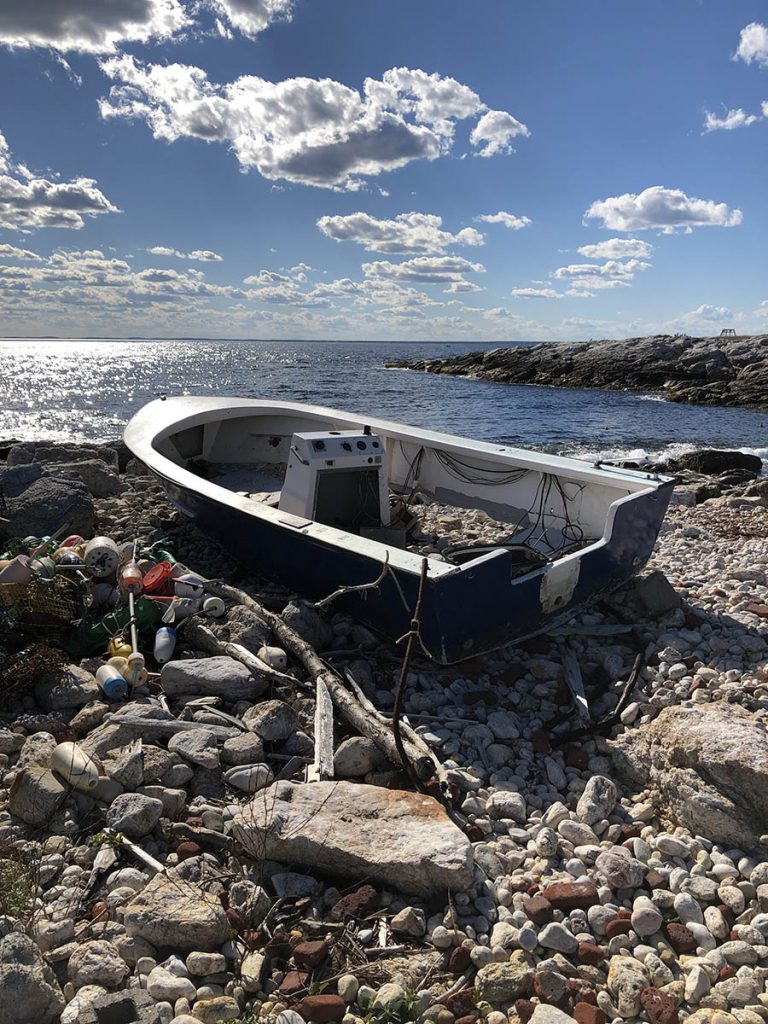
One of three boats that crashed into White Island in the summer of 2019 while people were attempting to access the island
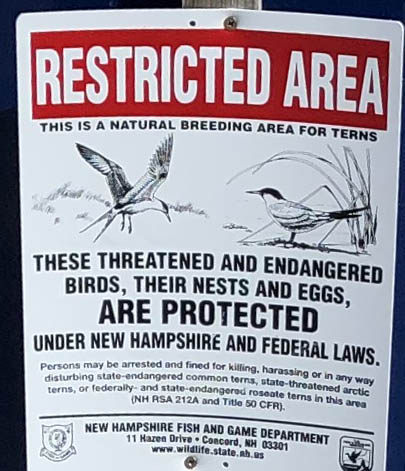

Terns Nesting on White Island
The Isles of Shoals Light is a lighthouse located on White Island in Rye, NH., Aka White Island Lighthouse, White Island Light. The Isles of Shoals lighthouse is the only offshore lighthouse in New Hampshire. Today, it is equipped with a VLB-44 LED light that can be seen up to 14 nautical miles. The light flashes every 15 seconds. Isles of Shoals Light was originally built in 1820 but the harsh Atlantic storms quickly deteriorated the White Island Lighthouse, even after several attempts to protect it after being built. The lighthouse was eventually replaced 39 years later, in 1859.
On April 19, 2007, a powerful nor’ easter storm hit New England and caused significant damage to the Isles of shoals, including White Island. This storm damaged the lighthouse tower, and washed away the covered tunnel that connects the generator room to the lighthouse tower, as well as the solar panels and fog horn. The navigational equipment was replaced by the Coast Guard immediately but since the lighthouse was automated by that time the wooden covered tunnel was not needed for the lighthouse to function or be maintained. The covered tunnel was rebuilt in 2011, the cost was $200,000.00 and was funded by state and federal grants. Today, only a few remnants remain of the old tunnel and can be seen on the east side of White Island and even on Seavey Island (see photos)! Read more history of the Isles of Shoals Light below…
Can you visit Isles of Shoals Light (White Island Lighthouse)?
Isles of Shoals Light and keepers cottage on White Island is now a historic site and managed by the State of NH Bureau of Historic Sites. The island is open to the public but is not staffed. You may, however encounter temporary staff there from the State of New Hampshire, Department of Resources and Economic Development, volunteers from Lighthouse Kids, and Biologists who are there to protect the endangered Terns. If you plan to visit White Island in June/July you can expect that the nesting Terns will defend their territory vigorously. From the moment you land on the island the Terns will attack the highest point on you (your head), this includes pecking your head, eyes, ears, etc! The Terns can be very dangerous when protecting their young. Be sure to bring an oar, a long stick, or other object you can hold above your head to protect your head but do NOT hit the Terns! Remember, they are endangered! The Terns also use feces as bombs to keep you away, these are not small by any means! With that said be sure to tread very carefully while on the island during nesting season. Terns nest on the ground, on the rocks and in the grass and are very hard to see the nest. Your best bet is to stay on the pathways and do not go to Seavey Island which is connected to White Island at low tide. In the off-seasons, mid-September through the end of May (approximately) you can walk about White Island and Seavey island without the presence of terns most of the time. This is the best time to see the lighthouse and cottage up close.
Note: At the time of this writing the keepers cottage and generator room cannot be entered by anyone under the age of 18 years old due to asbestos and lead paint. White Island can be very dangerous, the rocks are sharp and tricky. If you slide down a rock to descend on the rocks you can rip your clothing and even cut your skin to the point of needing medical attention, which is not available easily once on White Island.
Another thing to expect on White Island is the almost unbearable sound of the loud foghorns that activate every 30 seconds, 24 hours a day.
Getting onto White Island and Seavey Islands:
Getting on White Island and Seavey Island can be quite tricky and very dangerous. There are no docks there. Only way to get onto the islands is with a small boat. This is how volunteers, biologists, and the government access the island. With crashing waves on the rocky shoreline the dangers are abundant. On White Island near Seavey Island, on the northeast side, there is a slipway (which is as slippery as ice!), and a metal ramp (that has seaweed on it). But if you go there when the sea is calm and mid to high tide you have the best chance of not being injured or killed. Keep in mind there is almost always a rotating current near the ramp and slipway that can cause your small boat/skiff to rotate, so don’t be surprised if you start spinning in circles.
There is also some areas on the southwest side of White Island and Seavey Island that you may also be able to access in the off-season for Tern nesting ONLY.
** Be sure to wear life-preservers when making the trip to these islands and have all needed safety gear and a first aid kit handy **
Can you access White Island any other way?
Yes, you can land on White Island by helicopter. There is a helicopter pad on White Island on the north side of the lighthouse. Do keep in mind that landing a helicopter during the Tern nesting season can have catastrophic results. It is highly recommended that you do not land on White Island from the beginning of June through mid-September (approximately) as this can kill the endangered species and their young, violating state and federal laws that protect these birds.
Below is a video of the Terns and the sound of the foghorn on White Island near the Lighthouse. The video was not taken too close the the Tern nesting areas so the Terns were not as aggressive.
History of Isles of Shoals Light
The Isles of Shoals Light has a long history.
The first light on White Island was not a lighthouse at all. The light was a lantern that was kept lit by Captain Samuel Haley starting in 1790. Captain Haley owned many of the islands that make up the Isles of Shoals. But after a ship called the Sagunte crashed into White Island in 1813 there were plans to built a lighthouse on White Island to warn ships of the Isles of Shoals.
The first lighthouse on White Island was built in 1820-1821, made from wood shingles and stone. The lighthouse was equipped with red, white and blue flashing lights. The blue light was too dim to be used in navigation and was removed from the lighthouse. The keepers cottage was built of stone.
In 1838, White Island Light was one of the first lighthouses to be equipped with a Fresnel lens, but because the lighthouse tower was so short, the lens didn’t work as intended and had to be replaced again in 1841.
In 1839 Thomas Laighton became the first known appointed lighthouse keeper of the Isles of Shoals Light after buying 5 of the islands of the Isles of Shoals From Captain Samuel Haley. Laighton was upset about not winning the New Hampshire Governor election, so he moved his family out to the Isles of Shoals vowing to never return to the mainland again. This, however, didn’t last long as he returned to Portsmouth NH for business reasons, leaving his family on the Isles of Shoals. His wife Eliza had to manage the operations of the lighthouse in his absence. It is rumored that she couldn’t stand the loneliness of the island and divorced Thomas. His daughter, Celia Laighton, married Levi Thaxter. Celia Thaxter became a famous author of poetry, often writing about her time on the Isles of Shoals. It is rumored that her spirit remains on the Isles of Shoals.
In the 1850’s, a temporary lighthouse keeper named John Bragg Downs, with help from an unknown assistant saved the entire crew of a Russian ship which ran aground on White Island during a storm.
In 1859 the lighthouse tower was replaced. This lighthouse tower is still standing today, and stands at 58 feet high on top of the highest point of the island. In total, the lighthouse is 85 feet above mean high water.
In 1939 the United States Coast Guard took over all lighthouses and manned each one with their own crew, including the Isles of Shoals Light. Soon after, the US Coast Guard replaced the keeper’s cottage, which is the same one that remains today.
In 1978, the “Blizzard of ’78” storm swept the boathouse on the west side of the island into the ocean, it was never rebuilt. During the same storm a large bolder crashed through the keeper’s cottage. The men of the US Coast Guard had to evacuate the cottage, running up the ramp and into the lighthouse tower to wait out the rest of the storm.
In 1986 the Isles of Shoals Light became automated, which replaced the US Coast Guard team on the island. The Coast Guard still maintains the light as a navigational beacon.
On April 19, 2007 a severe storm caused a lot of damage to the lighthouse, the keeper’s cottage, and even washed away the massive tunnel after a huge wave washed over the entire island. Some historical records claim the wave could have been approximately 75 feet high!
In 2011 the tunnel was replaced at a cost of $200,000.00. This massive tunnel still stands today.
Winter 2015, another powerful storm hit the seacoast and caused damage the solar panels which power the light and the fog horn. Later that same year the equipment was once again replaced by the Coast Guard.
Sorry, no records were found. Please adjust your search criteria and try again.
Sorry, unable to load the Maps API.
Leave a Question, Comment, or Review Cancel reply
You must be logged in to post a comment.
Rye
New Hampshire
03870
United States

0 Questions, Comments, and Reviews on “Isles of Shoals Light: White Island Lighthouse Rye NH”
I own a home in Rye and will be retiring in a few months. I would like to run for Governor of White Island. How can I get on a ballot for this new position? Thanks.
Joe Leverone
You’ve got my vote!
Thank you so much Ms. Codd. With the support of such wonderfully talented citizens like you, I believe we can together bring about a splendid future for White Island and the Terns will finally come to appreciate cohabiting with us.
If they ever allowed that I would certainly run myself. 😉